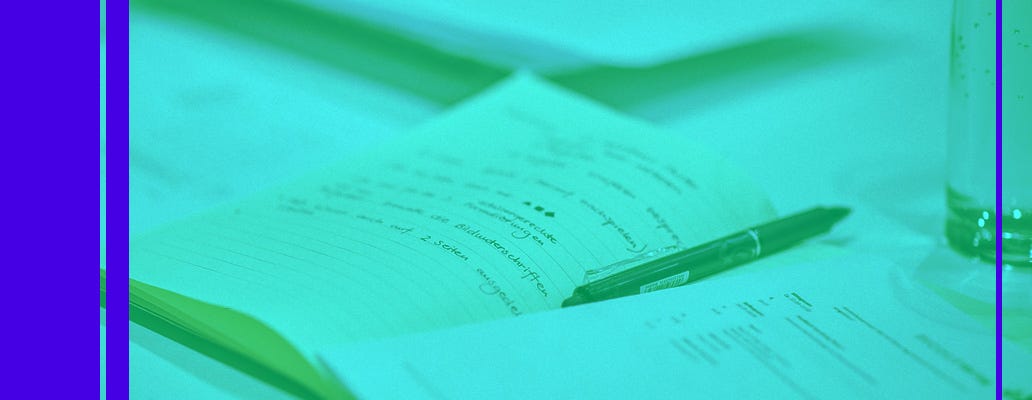Freewriting as a Tool for Career Clarity
Part 1 of 2 on Tapping into Your Inner Wisdom

Sometimes your brain gets noisy when you’re not sure what to do next. You feel stuck on a decision. No direction, or five directions. Or like your day is full but nothing feels important.
When that happens, I often turn to writing. Not polished writing — just fast, honest, unfiltered thoughts on a blank page. Freewriting. It’s a way to clear the fog, hear what’s really going on beneath the surface, and get unstuck — whether I’m solving a design challenge or figuring out what I want from the next chapter of my career.
Freewriting helped surface the real questions I needed to be asking.
Freewriting Isn’t Just for Writers
Think of freewriting as a tool to get out of your own way. It helps you bypass the critic, the imposter voice, and your well-rehearsed explanations. It makes space for truth.
You’re not writing to explain — you’re writing to understand.
The magic of freewriting lies in its simplicity. You sit down with a blank page and a question, set a timer, and go. No structure. No grammar rules. Just momentum. And in that flow, unexpected thoughts emerge. Ideas get clearer. Tensions reveal themselves.
Use Cases from My Past
In my work as a design director and function lead, I’ve used freewriting to think through a range of challenges: a team restructure that was fraught with landmines, a frustrating executive dynamic I couldn’t decode, a product direction I was confident in but wasn’t gaining traction.
And in my personal career moments — wondering if I was ready for something new, gut-checking if I was still growing in my role — freewriting helped surface the real questions I needed to be asking.
Sometimes what came out was just venting. Other times, I saw connections I otherwise hadn’t been able to reach in conversation or even deliberate thought. But either way, it gave me something solid to build on.
Use It for Design, Leadership — or Big Career Questions
Freewriting works because it slows you down and gives your inner logic room to speak. That’s valuable in every layer of professional life:
As a Designer:
Think through a sticky UX challenge or product compromise
Reflect on a user research insight that’s stuck with you
Process how to handle contradicting feedback
As a Leader:
Explore how to approach a tough conversation or 1:1
Clarify your own goals when everything feels reactive
Deconstruct team dynamics that feel “off” but aren’t readily explained
As a Professional Navigating a Career Path:
Revisit your role — is it still aligned with who you are?
Examine whether burnout is creeping in — and why
Articulate what you’re actually looking for in the “next thing”
How to Start Freewriting (Even If You’ve Never Tried)
You don’t need a special app or a fancy notebook (but if it motivates you, treat yo self). Here’s a dead-simple guide to try it this week:
1. Pick a Prompt
Start with a focused question like:
“What’s bothering me about work right now?”
“What would a great week (or year) look like?”
“Why does this project feel blah?”
“Where do I feel friction between who I am and what I do?”
2. Set a Timer
Ten to fifteen minutes is perfect. Long enough to get past the noise, short enough to not feel overwhelming.
3. Write Without Stopping
Keep your fingers moving. If you don’t know what to say, literally write “I don’t know what to say” or “I’m exploring an idea” until something else comes out. Don’t overthink. Don’t reread. Don’t polish.
4. Step Away, Then Reflect
Later that day or the next morning, come back and skim. Underline anything surprising, anything repeated, anything that stirs emotion. These are usually the seeds of deeper insight.
What It’s Helped Me Unlock
For me, the biggest value in freewriting isn’t always the clarity I get in the moment. It’s the accumulation of clarity over time. A few pages every so often turns into a personal record of what matters, what frustrates me, what energizes me — and eventually, patterns form.
More than once, I’ve realized I already knew what to do about a situation way before I acted — I just didn’t have a clear enough plan to trust it. Freewriting has helped me form that plan.
This Substack is actually a manifestation of freewriting for me. Sometimes I refer back to my journal to dig up a new topic. Or — if I have one already — writing for 15 uninterrupted, stream-of-consciousness minutes can give me my angle.
You Know More Than You Think
There’s a myth that clarity can only come from the outside — a mentor’s advice, a job offer, a new framework. And those can help. But often, the most accurate, grounded insight is already inside you. It’s just buried under layers of busyness, second-guessing, and overthinking.
Freewriting lets that signal cut through.
And once it does, the next step isn’t always action — it’s integration. That’s what we’ll cover in Part Two: what happens when you don’t immediately act on your insights, but instead let them steep through meditation, reflection, or quiet walks. That pause, too, can be powerful.
Enjoyed this piece?
I write weekly articles for designers and design leaders who want to grow their impact, lead with clarity, and build careers that actually feel sustainable.




